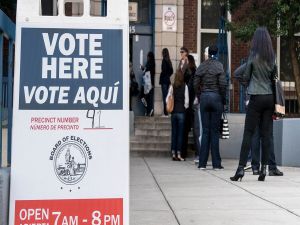 (The Federalist) In November, voters in seven states and Washington, D.C. will consider ballot initiatives related to ranked-choice voting (RCV), a completely new way of conducting elections.
(The Federalist) In November, voters in seven states and Washington, D.C. will consider ballot initiatives related to ranked-choice voting (RCV), a completely new way of conducting elections.
If voters in these and numerous other jurisdictions choose to use RCV to run their elections, it could prove disastrous for conservatives, both nationally and in the states where ranked-choice voting is being considered.
In traditional elections, voters typically select one candidate for each office, and then the candidate with the most votes wins. But in ranked-choice voting, elections are turned on their head.
Under RCV, voters are asked to rank all of the candidates for each office, even the ones they don’t like. If a candidate receives more than 50 percent of the first-preference vote, that candidate wins. But if no candidate surpasses 50 percent, then voters who chose an unpopular candidate as their first preference are then reassigned to another candidate based on their second, third, or even fourth preference. In effect, these voters get to vote twice or more. (Read More)
